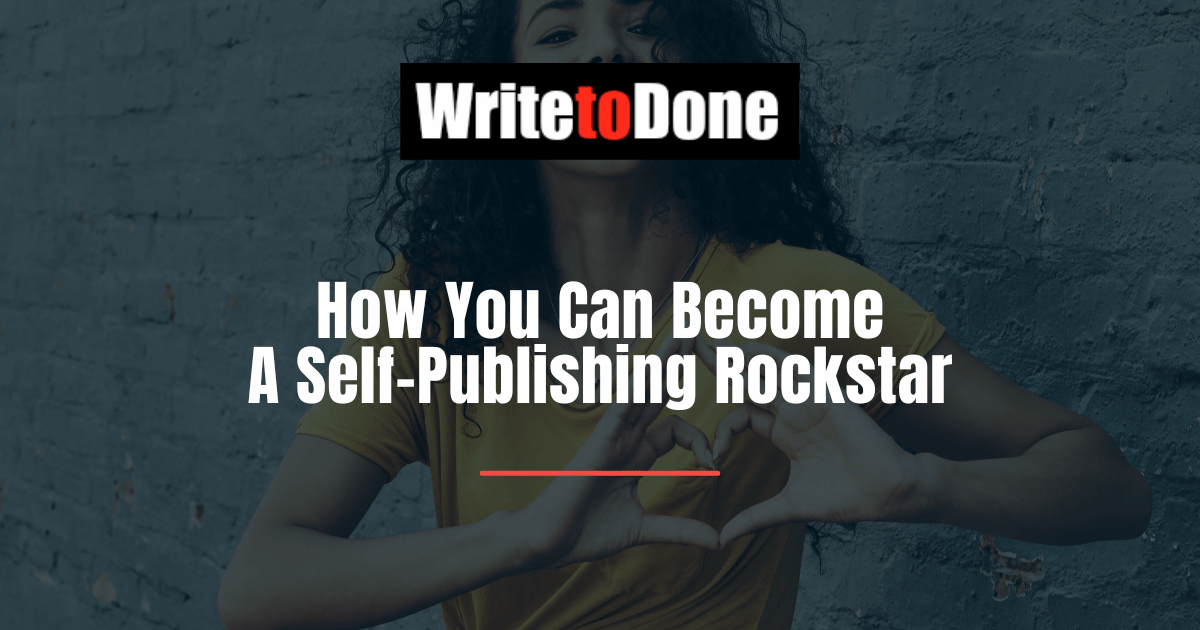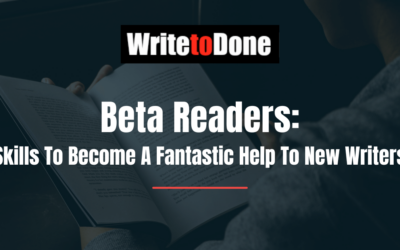Would You Like to Become a Self-Publishing Rockstar?
Are you confused by self-publishing?
I used to be, but not any more.
Johnny and I both wrote for our own websites, and for blogs like Write to Done, for years before self-publishing 1.5 million words of fiction in 2013.
Many authors (and marketers) say there’s never been a better time to be a writer, the gatekeepers are gone, it’s a gold rush etc. Some of this is true, but it’s surprising how much misinformation there is.
Yes, things are better for writers than they used to be … but without a plan in place, they’re also arguably worse. It’s easier to be discovered, but because anyone can now publish, there’s too much noise in the way of that new-found discoverability.
Here are some truths that will help you become a self-publishing rockstar.
TRUTH #1: You are responsible for your success.
Everything from pricing to customer loyalty to promotion is a tool in a willing writer’s hands: you are responsible for your own success.
That’s both good news and bad news.
If you’re not selling well in the U.K., maybe it’s because you haven’t promoted your book enough in the U.K. Or because you should manually adjust your U.K. price, rather than basing it on the U.S. dollar. (Although US$4.99 converts to £3.08 as of this writing, £2.99 is a better price psychologically and might lead to significantly greater sales despite the lost nine pence.) Your flagging U.K. sales could be due to anything. It’s your job to figure it out.
If you’re an independent publisher, you will have many tasks, and will need to find a balance between doing everything yourself, and delegating or outsourcing work.
More tasks mean more control, but they also mean – well – more tasks. So you must decide which you’d rather have: control (which, for people like us, means the ability to make things happen when and how we want them to), or a simpler work day.
TRUTH #2: Focus on strategies, not tactics.
In early 2012, KDP (Kindle Direct Publishing) had a deal where authors could agree to 90 days of Amazon exclusivity in exchange for five days of free promotion. For a while, this was like a switch we could turn on to drive sales, making our books free, then generating revenue during the post-free bump. But Amazon changed its algorithms and this feature became nearly useless for many authors.
An additional severe limitation on how the biggest book blogs could promote free e-books triggered widespread panic in the indie community. Authors reliant on free downloads later translating into paid sales ran around in circles screaming that the sky was falling.
To make things worse, Amazon was also changing its website to hide the Top 100 Free lists so that free books became less visible to casual browsers.
At the time, we were publishing a book each week with our shiny new publishing company. Our standard M.O. was to make our books free for the first three days so our faithful readers could snap them up, leave reviews (giving us solid social proof for later buyers), and seed those books in the customers-who-bought-this-also-bought-this lists of as many shoppers as possible.
It also meant something to rank well in the free lists; people who’d never heard of us would see the book at the top of a free list and download it. Abracadabra – brand-new readers!
The removal of ‘free download’ as a promotional tool was awful, but not devastating because we were only using free giveaways as one of our tools. It was a tactic — a specific useful thing in place at the current moment.
The underlying strategy (to get books into as many ideal readers’ hands as possible in a way that rewarded our faithful regulars and maximized reviews) was unaffected by the change. We simply abandoned the tactic of making the book free for the first few days and asked how else we could implement the same strategy.
We asked ourselves: “How can we reward our regular readers, maximize reviews, and get those books into the right hands?”
The answer became our next tactic: to price books at 99 cents for the first 3 days. Because our books are normally priced $2.99 and up, this was a good loyalty discount and had pretty much the same effect.
Eventually, this worked even better than free promotion because only people willing to open their wallets bought the books. Free-seekers are different from even 99-cent purchasers, and it led to better reviews and better reader loyalty and engagement.
You must have rock-solid strategies, and never stake your business on flash-in-the-pan strategies.
TRUTH #3: There are more gatekeepers than ever!
If ‘gatekeepers’ refers to people in positions of authority who have the power to keep your book out of print or e-ink, then there aren’t any gatekeepers in self-publishing. That’s awesome!
But if ‘gatekeepers’ refers to people who have the power to dictate how well your book sells, whether you should write a sequel, and whether you get good reviews and good word-of-mouth promotion, then guess what? Such gatekeepers abound – they’re called readers.
Some indies think that the ‘self’ in self-publishing makes them an island. They are in charge, and they can do whatever they want. If they want to put a flying shark on the cover of their historical romance, no one can stop them. If they want to ignore feedback, act rude, and price their short stories at $20, that’s up to them.
While all this might be true, having an actual career (rather than a time-intensive hobby) requires actually pleasing readers.
Self-publishing isn’t about writing and doing whatever you want; it’s about having a direct pipeline to the people consuming your work.
When we talk about removing gatekeepers, we’re talking about eliminating the people who presume to tell you what your readers want without letting you find out for yourself.
Author J.A. Konrath has a story about his book The List. Joe already had a traditional publisher, to whom he presented The List. They said readers wouldn’t want it. Joe thought he knew his readers better than they did, and felt certain they’d like it, so he self-published – and sales proved him right.
That’s what we mean when we talk about getting rid of the gatekeepers.
But don’t forget that there are still plenty of people keeping the gates. Please your readers — keep them engaged, respond to their needs, and effectively lead them from each book they finish to something else they might like — and you can build a fantastic indie career. Fail to do this, and you’ll find yourself locked out in the cold.
TRUTH #4: Everything has changed – except for what’s important.
Today, the power of the Internet lets us directly reach and connect with our readers, and we’re incredibly grateful to write at this time in history.
Self-publishing authors are in the book-selling business … and business is business, no matter where you conduct it. They are still buyers and sellers, even if the seller isn’t a big bookstore, and the customer is shopping on Kobo.
Price, packaging, presentation, intelligent upsell offers, and customer service still follow the same guidelines they always have. Whether it’s a traditionally published book or an e-book, a sale still tends to drive people to buy what they might not otherwise have bought, an overpriced product still won’t sell well, and an under-priced product will confuse customers and lead them to undervalue it.
In 1950, readers read books. In 2013, readers read books. At both times, readers enjoyed well-crafted stories with compelling characters. If a good book ended on a cliffhanger, both sets of readers would want to know what happened next, and were (are) therefore more likely to read the sequel. Readers at both times would enjoy a chance to get to know their favorite authors, and engage with them, if they could. Readers across the years would feel appreciated if they got a shot at special deals or reduced pricing. All readers would rather buy a boxed set of 3 books than spend more by buying the 3 books individually.
Whenever you hear about some change in the indie world (a new bookseller opens or a prominent social media vehicle closes down), don’t be reactionary and change your strategy. Instead:
Ask yourself: Does this change how readers read or how business is done?
Let your answer to this question guide you on whether or not you need to change your strategy.
Self-publishing success is within your reach if you can take responsibility for your success, focus on strategies rather than tactics, and concentrate on pleasing and engaging with your readers. But most of all, you need to remove your author hat and put on your business hat, because as a self-publisher, you’re a business owner. And your business is selling books.
Remember that in the end, what matters most is that an author writes great stories to satisfy their readers, and that a businessperson sells quality products to please their customers.
Have you an indie publishing story of your own? Share your experience, suggestions and responses in the comments!

















